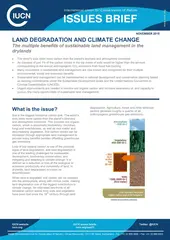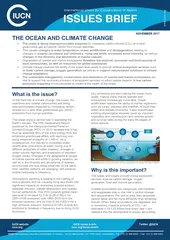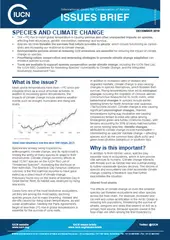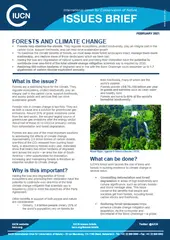How is IUCN limiting climate change impacts on nature?
Supporting a just and equitable transition
IUCN works to accelerate a just and equitable transition to clean energy and a low carbon future, for the protection of people and the planet, especially including:
Promoting Nature-based Solutions
In addition to cutting emissions, IUCN strongly advocates for a worldwide use of Nature-based Solutions, such as restoring ecosystems to absorb and sequester carbon already emitted or implementing ecosystem-based adaptation to increase the resilience of ecosystems.
The latest IPCC report demonstrated that reducing the destruction of forests and other ecosystems, restoring them, and improving the management of working lands, such as farms — are among the top five most effective strategies for mitigating carbon emissions by 2030.
IUCN engages on this issue from multiple perspectives, from assessing the risks that climate change poses to biodiversity, to advancing practical nature-based solutions for both climate mitigation and adaptation, centred on the better conservation, management and restoration of the world’s ecosystems, including:
- Enhance nature’s ability to store carbon across forests, drylands, and oceans by deploying Nature-based Solutions for climate mitigation, such as reducing emissions from deforestation and forest degradation (REDD+) and promoting forest landscape restoration and blue carbon initiatives.
- Catalyse the uptake of renewable energy best practices and supporting new, low-carbon technologies.
- Secure community resilience through Nature-based Solutions to adaptation, such as restoring mangroves and wetlands which reduce the impact of storms and floods, as well as hybrid solutions, such as green-grey infrastructure and integrated adaptation technologies.
- Support best practices in climate investments to minimise risks of maladaptation and ancillary negative impacts on people and biodiversity, such as developing best practices for the use of Nature-based Solutions as carbon offsets.
- Mobilize enhanced finance through multiple revenue streams to enable the implementation of Nature-based Solutions for climate change, such as through the Global EbA Fund, the Blue Natural Capital Financing Facility, the Subnational Climate Finance initiative, and the Nature+ Accelerator Fund.











